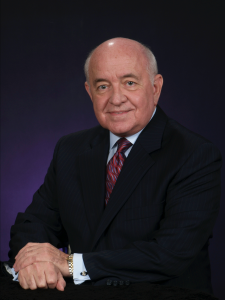THE HEARTBEAT OF YOUR OPERATIONS: THE IMPORTANCE OF YOUR DISPATCH TEAM
Adelynn Camacho, Guardian Secure Solutions LLC, Associate Member
Running a Private Security Company isn’t just about being vigilant—it’s about staying ahead to provide exceptional service.
The workflows of your Operation’s Team are the heartbeat of your organization, and failure to effectively plan the workflows will result in failure of the Operations. If you run an exceptional Internal Dispatch Center, your workflows must be clear, concise, and without any “grey” areas.
But where do you start?
Selecting a stellar team and setting them up for success before you even launch your Dispatch Center or Security Operations Center (SOC) is step 1. Dispatching is a far more demanding position than most expect, and not one to take lightly or hire quickly. This type of role requires a special individual who has a natural ability to multitask, remain calm under pressure, and help others stay calm.
Your dispatch team and operators should be fully trained on standard dispatching protocols before their first day of live action. The development of protocols and procedures is a lengthy process that must be thought out completely, prior to hiring your team. Remember, your dispatchers are there to support your physical security operations, and having written protocols that are easily accessible with clearly outlined workflows transfers accountability from your hands to theirs.
Streamlined processes are an operator’s lifeline!
Using technology to leverage your operations can alleviate user error and maximize your operations capabilities… while elevating your dispatchers! For example, incident response from Security cameras with automated detection capabilities removes the need to have eyes on the cameras 24/7, which is an expectation with inevitable flaws. Another example, using phone capability to screen caller types that will automatically update the dispatchers with the type of call being received allows for a more rapid response. All these technology aspects require set up, training and ongoing management review. As we know, technology is only as smart as we make it.
In any industry, but especially in a Dispatch Center, documentation keeps the company afloat. Your dispatchers will be required to analyze on a consistent basis as well as keep documentation up to the minute! Documentation is a task that at times may seem simple, quick & underwhelming but actually requires constant oversight from the management team. These details are paramount in the physical security operations world, and may come to a point where timely, complete and clear documentation either makes or breaks the company. Dispatchers wear many hats, and the expectations placed on them must be reasonable.
Possibly, the most challenging aspect of your dispatcher’s role is that tasks are ever-changing & never ending. Successful dispatchers have very little down time and should be using any “free” time to prepare for handling upcoming issues. Your management team sets the tone and the tone related to the expectation of productivity must be clear.
Your Security Operations Center is an investment and must be treated as such. Investing in technology, training, and staff is vital. The goal is to streamline operations through alignment of the overall business goals then as your business expands, your operations can also seamlessly expand.
The reality of running an Internal Dispatch Center is that it is time consuming, expensive, requires constant updates and attention. But using proven methodology to minimize issues, and maximize effectiveness can mitigate burn out for both you and your Center.
To learn more about our Security Operations Center and how we can serve you, visit our website guardiansecuresolutions.com.
 Adelynn Camacho is a security professional who has played a wide range of roles within security operations. Her passion is driven by her experience in physical security management and her goal is to find unique solutions for her clients so they can elevate their own businesses.
Adelynn Camacho is a security professional who has played a wide range of roles within security operations. Her passion is driven by her experience in physical security management and her goal is to find unique solutions for her clients so they can elevate their own businesses.






